Attention Deficit Hyperactivity Disorder (ADHD) can make it challenging to stay focused, manage energy levels, and control impulses — but yoga may offer a natural way to ease some of these symptoms. With its emphasis on breath control, mindfulness, and structured movement, yoga encourages individuals to stay present and grounded. This can be especially helpful for people with ADHD, who often struggle with distraction and overstimulation.
Research suggests that regular yoga practice may also support brain health, particularly by strengthening the prefrontal cortex — the area responsible for focus, planning, and decision-making. In many people with ADHD, this part of the brain may be underdeveloped or function less effectively. By consistently engaging in yoga, individuals may improve self-regulation and mental clarity over time.
Beyond the brain benefits, yoga also helps calm the nervous system through deep breathing and mindful movement. This can reduce anxiety, enhance emotional control, and create a greater sense of balance. Plus, establishing a regular yoga routine adds helpful structure to daily life, which many people with ADHD find beneficial.

Can Yoga Really Help with ADHD?
Yoga may be a valuable tool for managing ADHD symptoms, especially when used alongside traditional treatments like medication and therapy. Studies have shown promising results — for example, a 2017 study found that children with ADHD experienced improvements in attention and reaction time after practicing yoga twice a week for eight weeks. Similarly, a 2019 study reported that 12 weeks of yoga helped reduce hyperactivity and inattention in young children. These findings suggest that yoga can be an effective complementary therapy for kids with ADHD. However, many of these studies focused on limited or less diverse groups, so more research is needed to fully understand how yoga might benefit people from different backgrounds. While most of the current research centers on children, adults with ADHD may also see similar improvements, though this area remains under-studied. Still, the growing evidence points to yoga as a potentially helpful practice for boosting focus, reducing restlessness, and supporting overall wellbeing in people with ADHD.
The Benefits of Yoga — For Everyone, Including Those with ADHD
Yoga offers a wide range of health benefits for both the body and mind — and these advantages apply whether or not someone has ADHD. With regular practice, many people report reduced stress, relief from lower back or neck pain, fewer tension headaches, improved mental wellbeing, and better weight management.
For individuals with ADHD, yoga may offer additional support. A 2018 study involving preschoolers with predominantly inattentive ADHD found that practicing yoga three to four times per week led to noticeable improvements in attention and a reduction in both inattentive and hyperactive-inattentive symptoms.
However, researchers also observed that impulsivity increased in some children, highlighting the need for further study. While the results are encouraging, more research is necessary to better understand how yoga affects ADHD symptoms and why responses may vary from person to person.
How Yoga May Help Reduce ADHD Symptoms
In recent years, researchers have been increasingly interested in how yoga impacts brain function — particularly in relation to conditions like ADHD. A 2019 review of brain imaging studies compared the brain scans of people who regularly practiced yoga with those who did not. The findings revealed structural and functional improvements in key areas of the brain linked to mental health and cognitive performance.
Specifically, yoga practitioners showed positive changes in:
- The hippocampus, which plays a crucial role in learning and memory
- The amygdala, which is responsible for processing emotions
- The prefrontal cortex, the area involved in executive function, attention, memory, and self-regulation
These brain changes could help explain why so many people report mental health benefits after starting yoga — including better focus, emotional control, and reduced anxiety.
For individuals with ADHD, improvements in the prefrontal cortex are especially significant. This region often functions less efficiently in people with ADHD, contributing to symptoms like inattention, impulsivity, poor time management, and difficulty with planning. By strengthening the prefrontal cortex, yoga may help reduce some of these executive functioning challenges, offering a natural, supportive approach to symptom management.
Beginner-Friendly Yoga Poses for Adults with ADHD
Yoga in any form can be helpful for adults with ADHD, but poses that promote stillness, mindfulness, and reflection may be especially beneficial. A 2015 review found that mindfulness meditation may help adults manage ADHD symptoms more effectively — and integrating mindful breathing into simple yoga poses can enhance focus, reduce restlessness, and calm the mind.
Here are three beginner yoga poses that are ideal for promoting relaxation and attention:
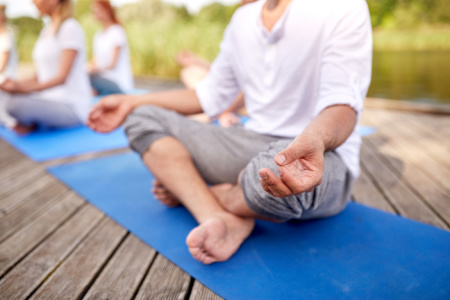
1. Easy Pose (Sukhasana)
A great posture for seated meditation and breath awareness.
- Sit on a mat or folded blanket.
- Cross your legs, placing each foot under the opposite knee.
- Rest your hands on your knees with palms facing up or down.
- Sit tall, relax your shoulders, and gaze forward or gently close your eyes.
- Breathe slowly and deeply, remaining in the pose for several breaths or the duration of your meditation session.
.jpg)
2. Side-Lying Savasana (Relaxation Pose – Variation)
A gentle and grounding pose ideal for winding down.
- Lie on your side with a soft bend in your knees.
- Rest your arms alongside your body.
- Place a small pillow, rolled towel, or yoga block under your head for support.
- Close your eyes, relax your facial muscles, and focus on your breath.
- Stay in this pose for several minutes, allowing your body to fully relax.

3. Cobra Pose (Bhujangasana – Variation)
This gentle backbend supports focus and energy without overstimulation.
- Lie flat on your stomach.
- Place your palms on the mat beneath your shoulders.
- Gently press into your hands to lift your chest off the ground, keeping your elbows slightly bent.
- Draw your shoulders back and lengthen through the spine.
- Inhale and exhale slowly, staying in the pose for a few breaths.
- Lower down and repeat as needed.
These simple, grounding poses can help center the mind and calm the nervous system — making them a great starting point for adults with ADHD looking to incorporate yoga into their routine.
Fun & Easy Yoga Poses for Kids with ADHD
Yoga can be a great way to help children with ADHD improve focus, reduce restlessness, and feel more calm — especially when it’s fun! Using animal-themed poses and storytelling can capture their imagination and keep them engaged. By turning yoga into a playful adventure, kids are more likely to enjoy the experience and benefit from the calming effects of mindful movement.
Here are three beginner-friendly yoga poses kids love:
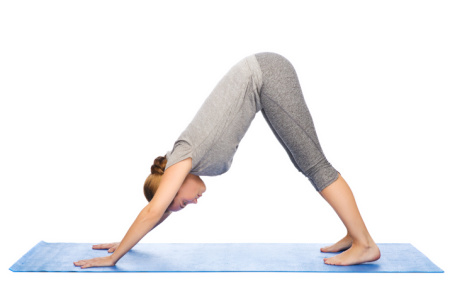
1. Downward-Facing Dog
Pretend to be a stretching puppy!
- Start on hands and knees like a tabletop.
- Straighten the arms and lift the knees off the ground.
- Push the hips up and back, making an upside-down “V” shape.
- Press the heels gently toward the floor.
- For extra fun, try lifting one leg like a wagging tail — then switch sides!
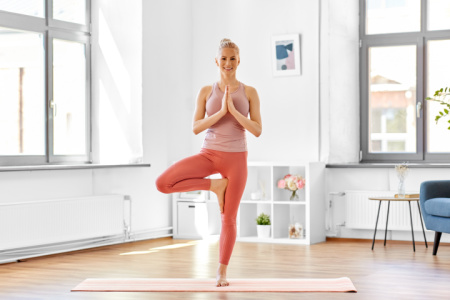
2. Tree Pose
Be a tall, steady tree swaying in the breeze.
- Stand tall with feet together.
- Shift weight onto one foot.
- Bring the sole of the other foot to the inside of the standing leg (on the calf or thigh — just not the knee).
- Press hands together at the chest or reach them overhead like branches.
- Focus on a still object to help with balance.
- Hold for a few breaths, then switch sides.
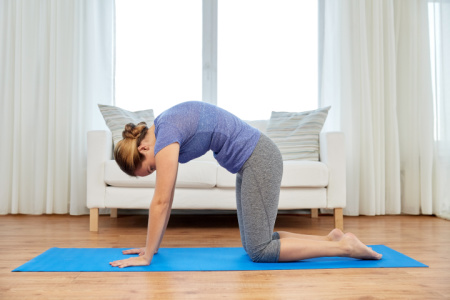
3. Cat-Cow Pose
Move like a cat and a cow for a gentle spine massage!
- Start on hands and knees with a flat back.
- As you exhale, round your back like a cat, tucking your chin to your chest.
- As you inhale, arch your back and lift your head and tailbone, just like a mooing cow.
- Keep moving slowly with each breath for several rounds.
These playful poses help children slow down, connect with their breath, and improve their ability to focus — all while having fun. Try incorporating them into a short daily routine or story-based yoga adventure to keep kids excited and engaged!
Summary: Yoga as a Supportive Tool for ADHD
Yoga can be a helpful and supportive practice for individuals with ADHD, offering benefits like improved focus, better emotional regulation, and reduced restlessness. When combined with mindfulness techniques such as meditation, yoga may enhance attention and promote a greater sense of calm.
For adults, beginner-friendly poses like Easy Pose, Corpse Pose, and Thunderbolt Pose are excellent for building a sense of stillness and awareness. For children, engaging poses that mimic animals or nature — such as Tree Pose or Butterfly Pose — can make yoga both fun and accessible.
While the research on yoga for ADHD is encouraging, it should be viewed as a complement to, not a replacement for, professional treatments like medication and therapy. Anyone experiencing challenges with ADHD medications, including side effects, should consult a healthcare provider to discuss the best course of action.




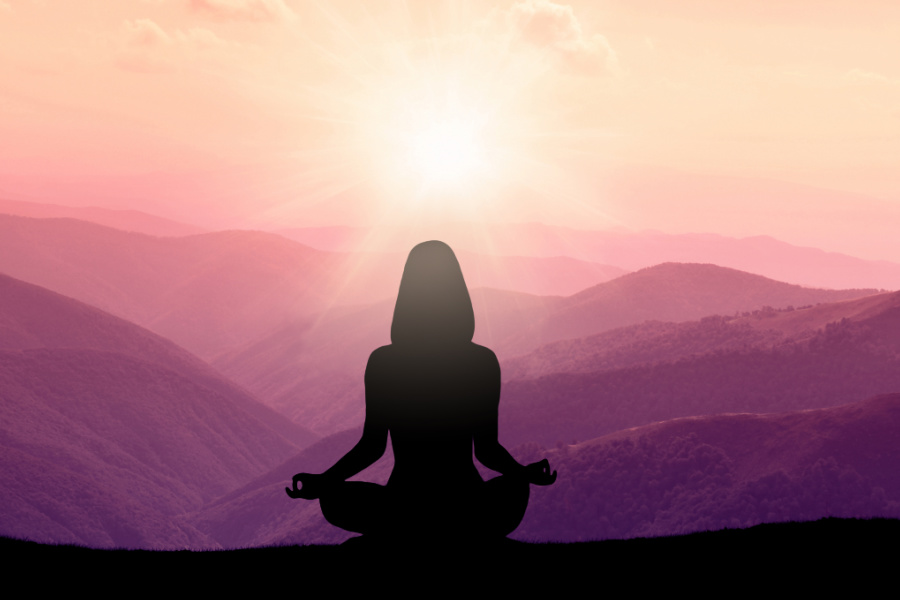
.svg)

.svg)


